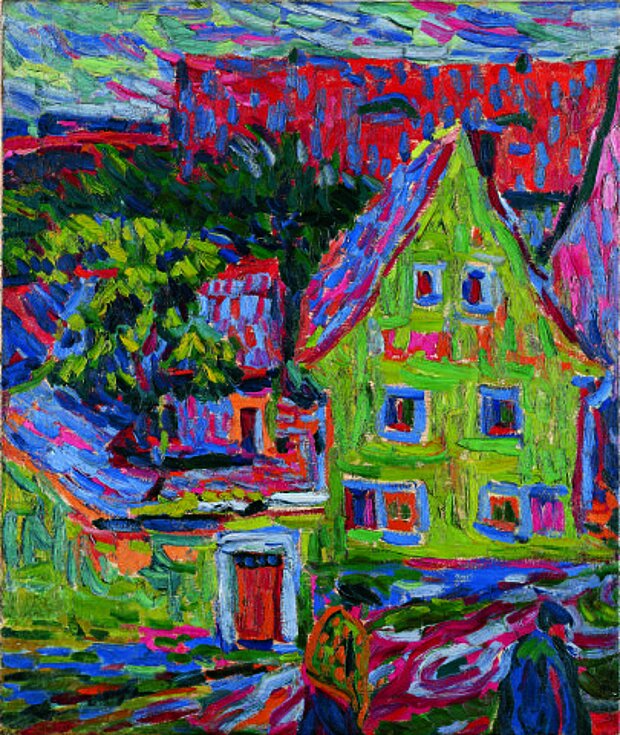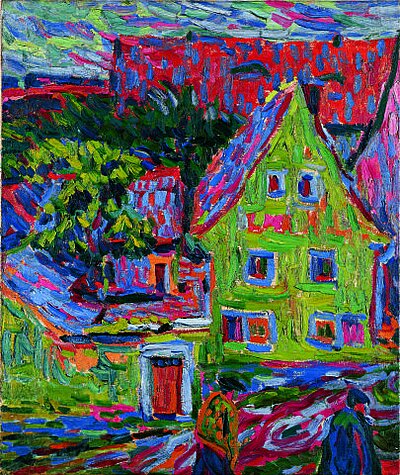
Kirchner, Ernst Ludwig
Grünes Haus
The Green House
1906

© mumok
| Object description | Oil on canvas |
|---|---|
| Object category | painting |
| Material |
Painting layer:
oil paint
Support:
canvas
Object:
Optium Museum Acrylic
|
| Technique |
Object:
oil paintings
|
| Dimensions |
object size:
height: 70 cm,
width: 59 cm,
depth: 2 cm
frame dimension:
height: 88 cm,
width: 77,5 cm,
depth: 7 cm
object:
weight: 5 kg
|
| Year of acquisition | 1963 |
| Inventory number | B 80/1 |
| Creditline | mumok - Museum moderner Kunst Stiftung Ludwig Wien |
| Rights reference | Gemeinfrei | public domain |
| Further information about the person | Kirchner, Ernst Ludwig [GND] |
| Literature |
Laboratorium Moderne/Bildende Kunst, Fotografie und Film im Aufbruch Museum moderner Kunst Stiftung Ludwig Wien Ernst Ludwig Kirchner BRÜCKE.The Birth of Expressionism in Dresden and Berlin, 1905-1913 Ernst Ludwig Kirchner, 1880 - 1938. Am Abgrund der Zeit. Ernst Ludwig Kirchner In freier Natur - Von Cézanne bis Picasso Im Farbenrausch.Munch, Matisse und die Expressionisten |
In 1905, after studying architecture in Dresden, Ernst Ludwig Kirchner founded the artist group, „Die Brücke“, together with his friends Fritz Bleyl, Erich Heckel and Karl Schmidt-Rottluff. Their aim was to establish a new, anti-academic style of painting that rejected purely natural representation and encouraged emotionality and direct expression. “Anyone who directly and genuinely reproduces what drives him to create belongs with us,” wrote Kirchner in the “Brücke” programme. “Grünes Haus” from 1906 illustrates this demand. Kirchner chose a simple, anonymous house in Dresden as the subject for a picture and translated it in a personal way. The gestural style of painting and the complementary colours he used impart the natural model with dynamism and lend the unspectacular subject a pulsating vitality. Even the two figures in the foreground are bound up in this dynamism and appear to meld with their surroundings. After collapsing during the First World War, Kirchner moved to Switzerland. It was there, in 1923, that he painted a self-portrait on the reverse of this picture. The artist probably used the canvas a second time because of a shortage of material. Eventually, the rise of the Nazis in Germany meant that Kirchner’s pictures could no longer be shown. They were removed from the museums and labelled “degenerate”. The defamation of both his work and person deepened his personal crisis. In June 1938 he took his own life.
© mumok – museum moderner kunst stiftung ludwig wien

